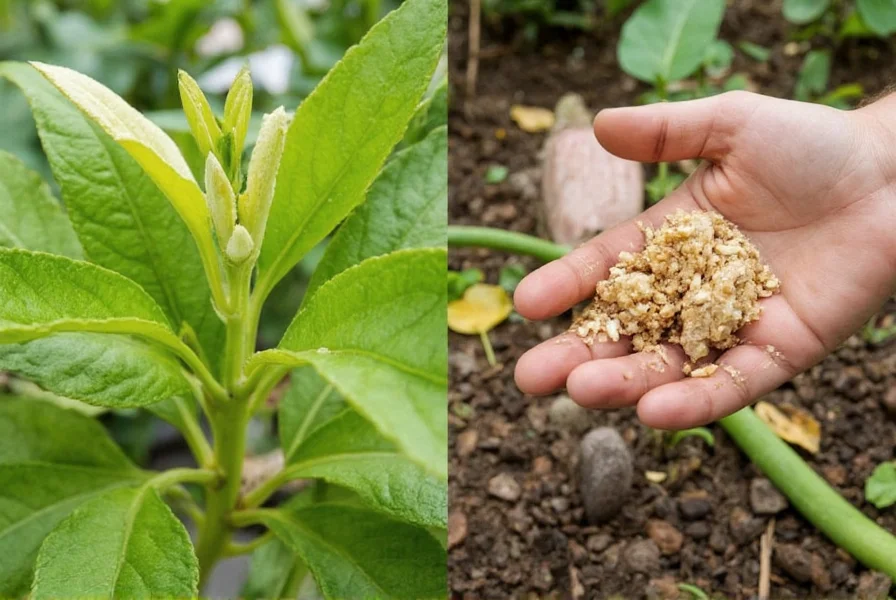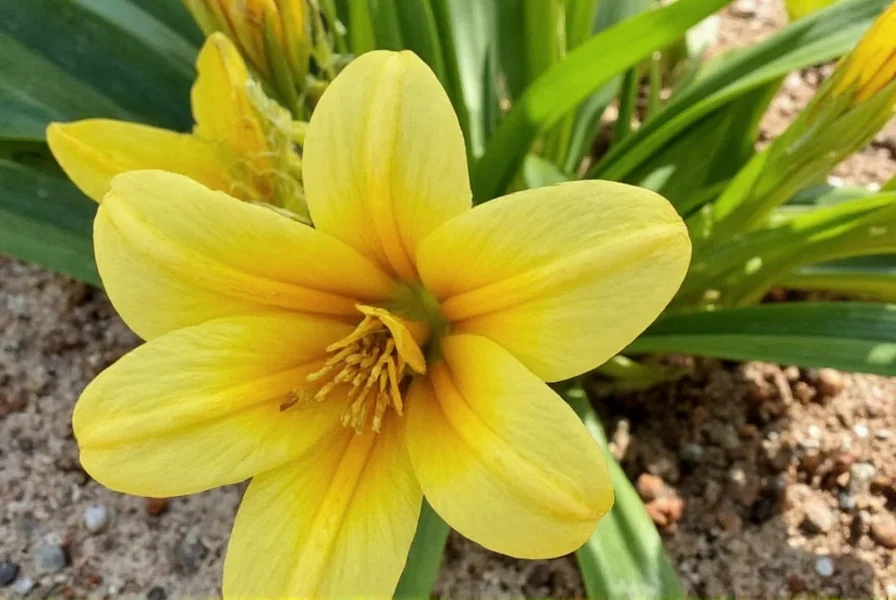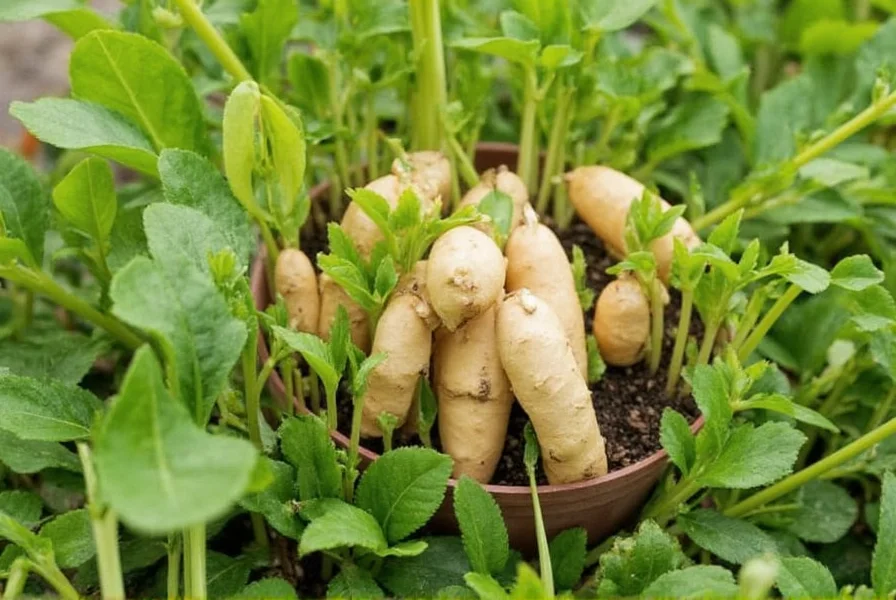Growing your own ginger offers fresh, organic spice with superior flavor and health benefits compared to store-bought options. This tropical perennial thrives in warm climates but can be cultivated indoors or in containers almost anywhere with proper care. Whether you're an experienced gardener or trying your first homegrown spice, understanding the specific requirements for ginger cultivation ensures a bountiful harvest of this versatile rhizome.
Understanding Ginger Growth Requirements
Ginger (Zingiber officinale) isn't actually a root but a rhizome—an underground stem that stores nutrients. This distinction matters because it affects how the plant grows and what conditions it needs. Unlike true roots that grow downward, rhizomes grow horizontally, sending up shoots while expanding laterally. This growth pattern determines proper planting depth and spacing for optimal development.
Ginger originates from tropical rainforests, so it naturally prefers warm temperatures between 70-90°F (21-32°C), high humidity, and protection from direct sunlight. While it can tolerate some cooler temperatures, frost will kill the plant. The ideal growing season spans 8-10 months from planting to harvest, with most gardeners starting in spring for a fall harvest.
| Ginger Variety | Flavor Profile | Growing Time | Best Use |
|---|---|---|---|
| Common Yellow Ginger | Sharp, pungent | 8-10 months | Cooking, medicinal |
| African Ginger | Strong, spicy | 9-11 months | Spice blends |
| Indian Ginger | Robust, aromatic | 8-9 months | Culinary applications |
| Blue Ring Ginger | Milder, citrus notes | 7-9 months | Raw consumption |
Selecting and Preparing Ginger Rhizomes
The foundation of successful ginger cultivation starts with quality rhizomes. Look for plump, firm pieces with multiple eye buds (the small bumps where new growth emerges). Organic grocery store ginger often works well since non-organic varieties may be treated with growth inhibitors. Choose pieces about 1-2 inches long with at least one or two visible buds.
Before planting, encourage sprouting by placing rhizomes in a warm, dark location for 1-2 weeks. Some gardeners soak them in lukewarm water overnight to stimulate growth. You can also plant directly, but pre-sprouted rhizomes establish faster. When selecting ginger for growing ginger at home, avoid pieces with soft spots, mold, or shriveled appearance.

Optimal Planting Conditions for Ginger
Creating the right environment determines whether your ginger thrives or struggles. The best soil for growing ginger is loose, well-draining, and rich in organic matter with a slightly acidic pH between 5.5 and 6.5. Amend garden soil with compost and perlite or sand to improve drainage. For container growing, use a high-quality potting mix designed for tropical plants.
Plant ginger rhizomes 2-4 inches deep with the eye buds facing upward. Space pieces 8-12 inches apart in rows 18-24 inches apart if planting in the ground. For containers, choose pots at least 12 inches deep with adequate drainage holes—growing ginger in containers requires careful moisture management since pots dry out faster.
Location matters significantly for ginger cultivation. While it needs warmth, direct afternoon sun can scorch leaves. Choose a spot with morning sun and afternoon shade, or dappled sunlight throughout the day. In cooler climates, grow ginger in containers that you can move indoors when temperatures drop below 50°F (10°C).
Essential Care Practices for Healthy Ginger Plants
Consistent moisture represents the most critical factor in ginger care. Keep soil evenly moist but never waterlogged—ginger needs humidity but rots in standing water. Water when the top inch of soil feels dry, increasing frequency during hot weather. Mulching with straw or shredded leaves helps maintain moisture levels and regulates soil temperature.
Fertilize ginger every 4-6 weeks with a balanced, organic fertilizer or compost tea. Avoid high-nitrogen formulas that promote leaf growth at the expense of rhizome development. During the growing season, ginger benefits from monthly applications of potassium-rich fertilizer to encourage robust rhizome formation.
Monitor for common pests like aphids and spider mites, which rarely cause serious damage but can stress plants. More concerning are fungal diseases like rhizome rot, which occurs in poorly draining soil. Prevent disease by ensuring proper spacing for air circulation and avoiding overhead watering.
Harvesting and Storing Your Homegrown Ginger
Understanding when to harvest ginger requires patience—most varieties need 8-10 months from planting to reach full maturity. Signs your ginger is ready include yellowing leaves and the natural die-back of foliage in late fall. You can also harvest small amounts earlier by carefully digging around the edges of the plant.
To harvest, stop watering 1-2 weeks beforehand to dry the soil slightly. Gently dig around the plant with a garden fork, being careful not to pierce rhizomes. Lift the entire plant, shake off excess soil, and cut rhizomes from the stem. Allow harvested ginger to cure in a shaded, well-ventilated area for 2-3 days before storage.

Store ginger in a cool, dark place with high humidity. Options include burying in dry sand, wrapping in paper towels inside a perforated plastic bag in the refrigerator, or freezing for long-term storage. Properly stored ginger maintains quality for several weeks, with some methods extending freshness to several months.
Advanced Techniques for Maximum Ginger Production
For gardeners seeking to optimize their ginger yield, consider these professional techniques. How long does ginger take to grow to maximum size? Most gardeners harvest at 8-10 months, but leaving ginger in the ground longer (in frost-free climates) produces larger rhizomes, though flavor may intensify beyond some palates' preferences.
Successive planting every 2-3 weeks during the growing season ensures a continuous harvest. Start new rhizomes while others mature for staggered availability. In cooler climates, begin plants indoors 4-6 weeks before the last frost, then transplant outdoors when soil warms.
For organic ginger growing methods, incorporate companion planting with shade-providing crops like bananas or taller vegetables. This creates the dappled light ginger prefers while maximizing garden space. Interplanting with marigolds may help deter nematodes, a common ginger pest in some regions.
Troubleshooting Common Ginger Growing Challenges
Ginger growers often encounter specific issues that affect yield and quality. Yellowing leaves typically indicate overwatering or poor drainage—reduce watering frequency and check soil composition. If leaves appear scorched, provide more shade during peak afternoon sun.
No growth after several weeks usually means the rhizome wasn't viable or planting depth was incorrect. Ginger grows slowly at first, but should show signs of growth within 2-3 weeks in warm conditions. If nothing appears after a month, check the rhizome for rot or replant with fresh material.
Small rhizomes often result from insufficient growing time, overcrowding, or inadequate nutrients. Ensure plants have enough space (at least 8 inches between rhizomes) and receive regular feeding during the growing season. Remember that ginger needs patience—rushing the process yields disappointing results.
Can I grow ginger from grocery store ginger?
Yes, you can grow ginger from grocery store ginger, though organic varieties work best as conventional ginger may be treated with growth inhibitors. Look for plump pieces with multiple eye buds, soak overnight, and plant with buds facing up. While success isn't guaranteed, many gardeners achieve good results with this method for growing ginger at home.
How often should I water ginger plants?
Water ginger when the top inch of soil feels dry, typically 1-2 times per week depending on climate. During active growth in warm weather, you may need to water every 2-3 days. Container-grown ginger requires more frequent watering than garden-planted ginger. The key is maintaining consistent moisture without waterlogging, as ginger needs humidity but rots in standing water.
When is the best time to harvest ginger?
The best time to harvest ginger is 8-10 months after planting, when leaves yellow and begin to die back naturally. In most climates, this occurs in late fall before the first frost. You can harvest small amounts earlier by carefully digging around the edges, but full-sized rhizomes require the complete growing season. Mature ginger has a stronger flavor and stores better than immature ginger.
Can ginger be grown indoors year-round?
Yes, ginger can be grown indoors year-round with proper conditions. Use a container at least 12 inches deep with drainage holes, place in bright indirect light (east or north-facing window), and maintain temperatures between 70-90°F (21-32°C). Increase humidity by placing the pot on a pebble tray with water or using a humidifier. Indoor ginger typically grows slower but can produce harvestable rhizomes in 10-12 months.
Why are my ginger leaves turning yellow?
Yellowing ginger leaves usually indicate overwatering or poor drainage, though it can also signal nutrient deficiency or excessive sun exposure. Check soil moisture—if consistently wet, reduce watering frequency. Ensure your soil has adequate drainage with perlite or sand added. If growing in containers, verify proper drainage holes. In late season, yellowing is natural as the plant prepares for harvest. Persistent yellowing earlier in the season requires adjustment of care practices.











 浙公网安备
33010002000092号
浙公网安备
33010002000092号 浙B2-20120091-4
浙B2-20120091-4